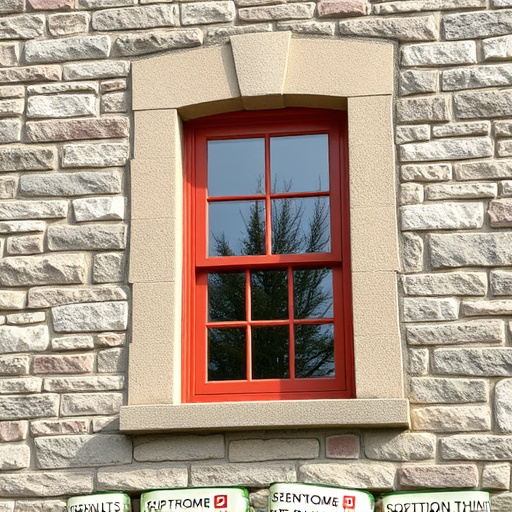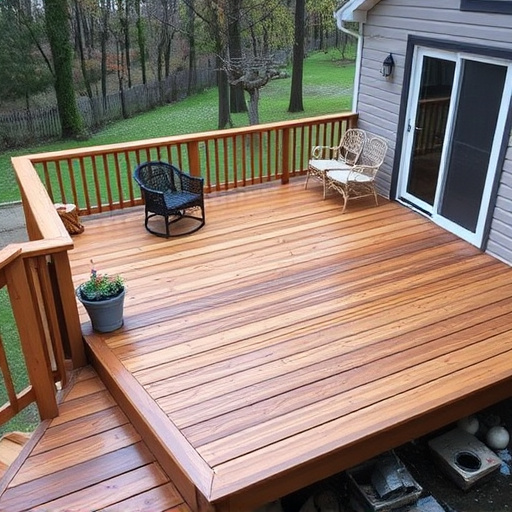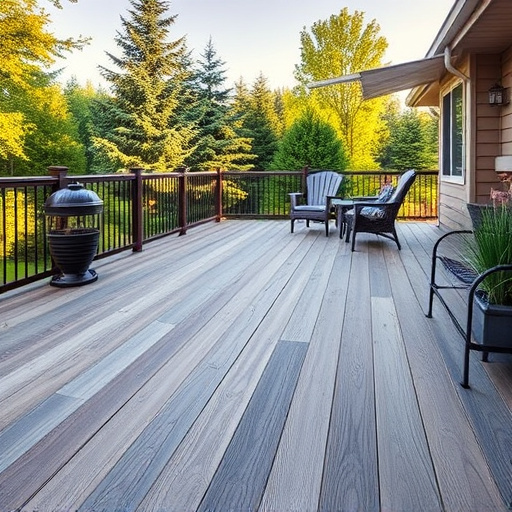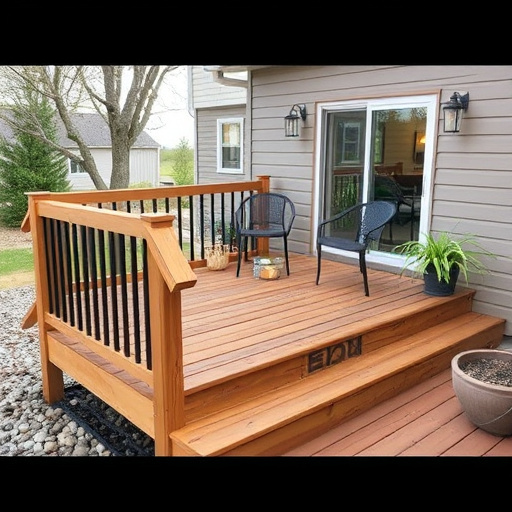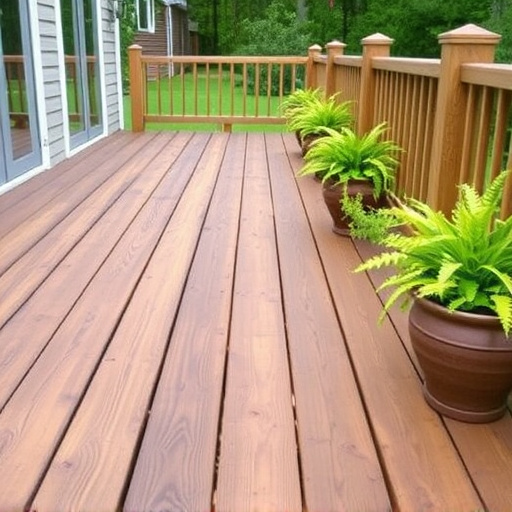Deck sealing frequency varies based on location, construction material and weather exposure, with residential decks needing every 2-3 years. Commercial spaces and areas prone to water damage require more regular sealing (1-2 years). Regular sealing protects against moisture, UV rays and extreme temps, preserving deck aesthetics and structural integrity, preventing damage and costly repairs. Material type, environmental conditions and inspections by specialists determine optimal sealing frequency.
Deck sealing is an essential maintenance practice to protect your outdoor investment. Understanding how often to schedule these services can extend the life of your deck, ensuring it remains vibrant and sturdy. This article explores the ideal frequencies, considering weather patterns, seasonal changes, and key factors influencing reapplication needs. By delving into these aspects, you’ll gain valuable insights into maintaining a well-preserved deck with optimal protection through regular sealing.
- Understanding Deck Sealing Frequencies
- Weather and Seasonal Impact on Decks
- Factors Determining Reapplication Needs
Understanding Deck Sealing Frequencies
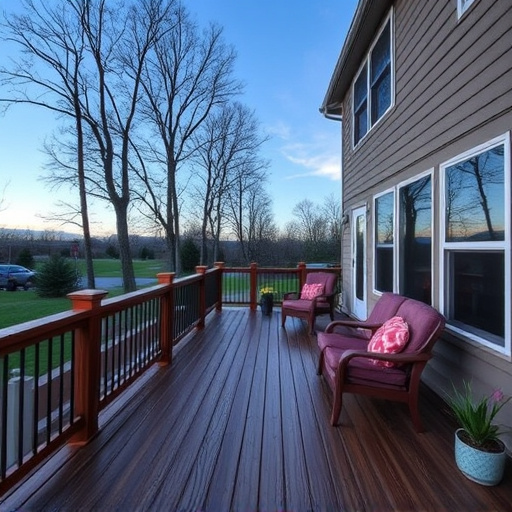
Understanding Deck Sealing Frequencies
Deck sealing is an essential part of maintaining outdoor spaces, offering protection against weather damage and prolonging the life of your deck. The frequency at which you should schedule deck sealing services depends on several factors, including the climate you live in, the materials used in your deck’s construction, and how frequently it is exposed to harsh conditions like rain, snow, and sunlight. In general, a good rule of thumb is to have your deck sealed every 2-3 years for optimal protection.
For commercial spaces or homes with siding replacement or roofing concerns, regular deck sealing can play a crucial role in protecting the overall structure. Commercial siding and roofing are exposed to varying weather conditions throughout the year, necessitating more frequent sealing (every 1-2 years) to prevent water damage and maintain structural integrity. This proactive approach not only enhances aesthetics but also saves on costly repairs down the line, ensuring your deck remains a vibrant and functional part of your outdoor living space or commercial property.
Weather and Seasonal Impact on Decks
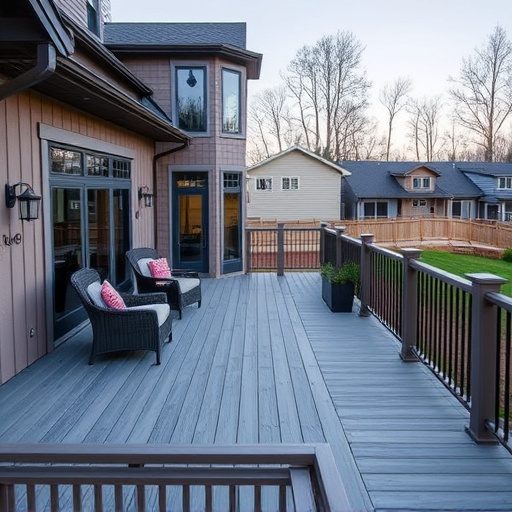
The weather plays a significant role in determining how often you should schedule deck sealing services. Extreme temperatures, both hot and cold, can accelerate the aging process of your deck’s surface. In winter, freezing and thawing cycles weaken wood fibers, leading to cracks and splinters. Conversely, scorching summer heat dries out the wood, causing it to shrink and warp. Regular sealing helps protect against these seasonal impacts by creating a barrier that shields the deck from moisture, UV rays, and extreme temperatures.
Additionally, changing seasons bring varying levels of precipitation, including rain, snow, and sleet. These weather patterns can leave behind water stains, mold, and mildew, all of which can damage your deck’s finish over time. A good seal not only preserves the color and texture of the wood but also repels water, preventing water-related issues that could lead to more extensive repairs, such as siding repairs or even roofing and siding replacement. Timely deck sealing is a proactive step in maintaining your home’s exterior services and ensuring your deck remains in top condition throughout the year.
Factors Determining Reapplication Needs
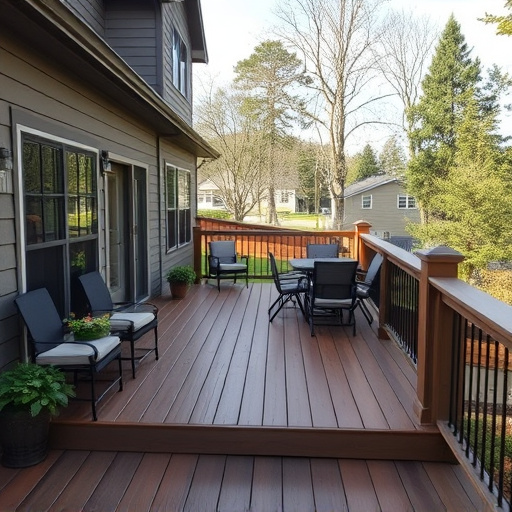
The frequency at which you should schedule deck sealing services largely depends on several factors unique to your deck and local environmental conditions. One of the primary considerations is the type of material your deck is made from. Wood decks, for instance, require more frequent sealing than composite or vinyl decks due to their natural porosity, which allows moisture to seep in and compromise the wood’s integrity over time.
Other factors include exposure to harsh weather conditions, such as sunlight, wind, rain, or snow, as these can accelerate the aging process of your deck. Commercial roofing and siding services often recommend reapplying sealing every 2-3 years for optimal protection, but this timeline may vary based on the aforementioned variables. Professional siding specialists suggest that regular inspections can help determine when reapplication is needed to maintain the deck’s aesthetic appeal and structural soundness.
Regular deck sealing is essential to protect your investment from the elements, prevent rot, and maintain a beautiful finish. While recommendations vary, generally, professional deck sealing services should be scheduled every 2-3 years, depending on factors like weather exposure, wood type, and foot traffic. By adhering to these guidelines, you can ensure your deck remains in top condition for years to come, maximizing its lifespan and aesthetic appeal.



